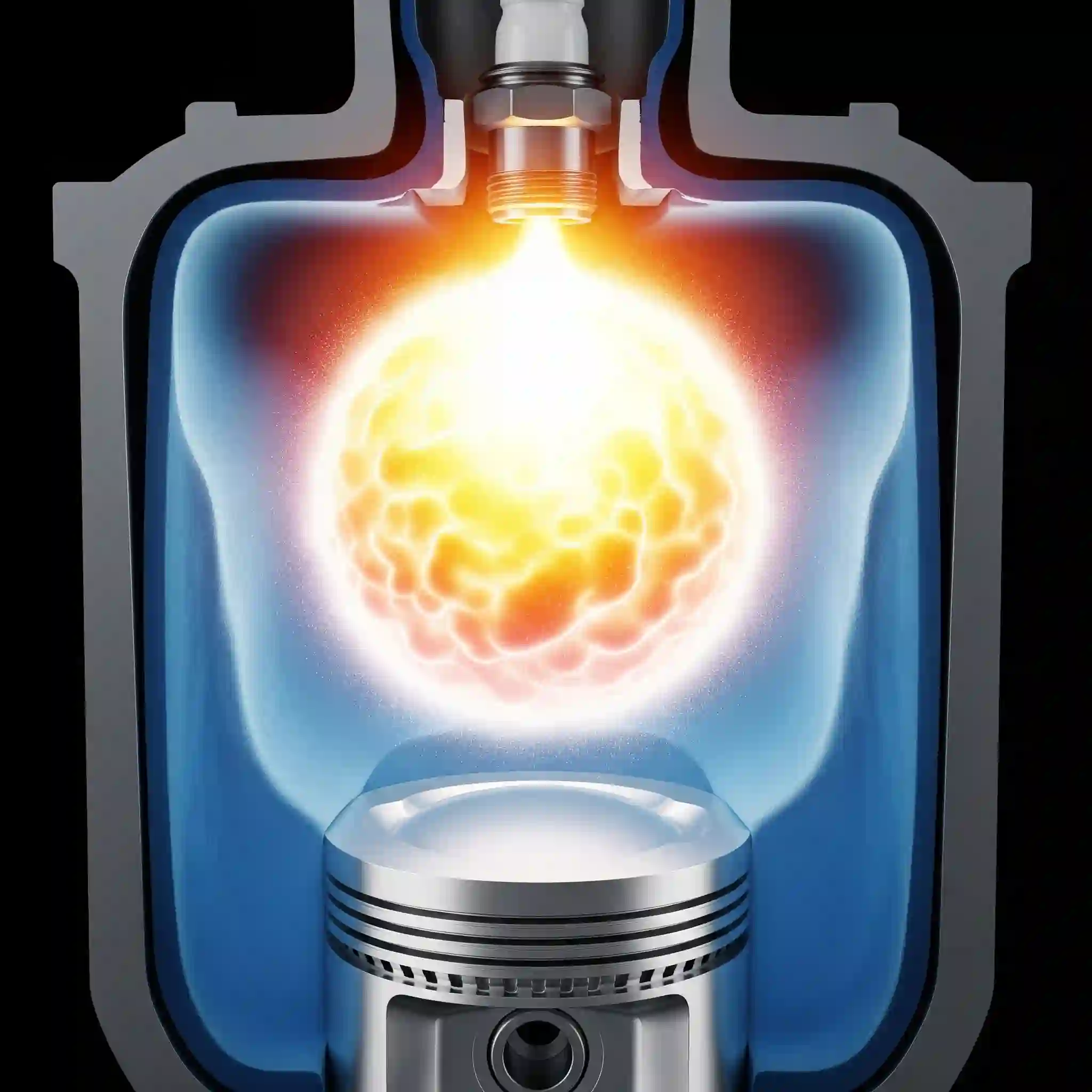It’s easy to get lost in the academic side of fluid dynamics. I mean, pages and pages of complex math. But what happens when those equations leave the textbook and get their hands dirty? That’s where the real value is. If you’re new to the concept, you might want to start with our deep dive into what CFD actually is, but here, we’re jumping straight into the action.
We’re going to look at some of the most impactful real-world applications of CFD that I’ve seen shift industries. This isn’t just about pretty pictures; it’s about solving gnarly engineering problems that save companies millions and, in some cases, even save lives.
1. High-Octane Engineering: How CFD Gives Formula 1 the Winning Edge
Forget everything you think you know about speed. In Formula 1, it’s not about being fast in a straight line; it’s about how you cheat the air in the corners. Every single surface on an F1 car is an aerodynamic device, and the team that understands airflow best, usually wins. It’s a brutal, never-ending development war fought in milliseconds.

This is where the real magic happens. We’re talking massive computational clusters running simulations 24/7 to analyze how air flows over the front wing, around the sidepods, and under the floor to create “ground effect.” They simulate everything from the behavior of the car in another car’s turbulent wake (“dirty air”) to the efficiency of the DRS flap.
I’ll never forget a university project I worked on nearly 15 years ago, a much simpler vehicle aerodynamics study. We spent weeks building this beautiful model, only for our initial simulations to be completely wrong because we’d messed up the boundary layer mesh. It was a painful lesson but taught me that the devil is always in the detail. In F1, that one tiny detail is the difference between pole position and not even making it out of qualifying. It’s why so many teams are constantly balancing digital simulations with wind tunnel tests to validate their findings.
2. Aerospace & Defense: Ensuring Safety and Performance at 30,000 Feet 🚀
It’s one thing to design a wing that generates lift. It’s another entirely to ensure it performs reliably under extreme conditions, from a scorching runway in Dubai to cruising through sub-zero temperatures where ice formation is a real threat. The stakes here are incredibly high; there’s simply no room for error.
This is where CFD moves from a performance tool to a mission-critical safety process. Engineers use it for everything from optimizing fuel burn by minimizing drag to prediciting how the airframe will react to sudden maneuvers. A huge area of focus is simulating ice accretion on wings and engine inlets. Understanding where and how quickly ice will form is vital for designing effective anti-icing systems.
The non-negotiable part of our work in this sector is validation. A simulation result is just a colorful picture until you can prove its performance matches reality. That means meticulously comparing simulation data for lift and drag coefficients against established experimental data. For projects this critical, you can’t just hire a freelancer; you need a team whose process is built around accuracy, which is why many aerospace firms rely on specialized CFD consulting services. You also have to understand the limits of your tools, which is why knowing how accurate CFD really is is fundamental.

3. The Future of Medicine: Simulating Life Inside the Human Body
Now, this is where things get really personal. We’re moving from machines made of carbon fiber and aluminum to the most complex machine of all: the human body. CFD is revolutionizing medical device design by allowing us to see how devices interact with biological systems before they ever reach a patient.
Think about designing a new artificial heart valve or a blood pump for a patient with heart failure. A key concern is hemolysis—the damage and destruction of red blood cells caused by high mechanical stress. If the pump’s design creates regions of very high shear stress, it could literally shred blood cells, causing severe complications. Historically, engineers would have to rely on costly and slow physical prototyping and animal testing to discover these flaws.
With CFD, we can run a detailed analysis using non-Newtonian fluid models that mimic blood’s actual properties. We can pinpoint exact locations of high shear stress and iterate on the design—adjusting blade curvature, rotational speed, or flow path—before a single physical part is ever made. This not only speeds up the development cycle by months but also leads to safer, more effective devices for patients. It’s an incredibly rewarding field to work in.
4. Keeping It Cool: Winning the War on Heat in High-Performance Electronics
Heat is the silent killer of performance. Every component in your phone, your laptop, and especially in massive data centers, is generating a ton of it. For years, the solution was simple: slap a fan on it. But we’ve hit the physical limits of that approach. Now, we’re in an era of complex liquid cooling loops, vapor chambers, and passive heatsinks that need to be ridiculously efficient.
This is a classic CFD problem of Conjugate Heat Transfer (CHT), where we simulate heat transfer through both the solid components (the silicon chip, the copper heatsink) and the fluid moving past it (air or liquid coolant). It lets us see the entire thermal picture. We can identify hotspots with pinpoint accuracy and redesign a heatsink’s fin geometry to maximize surface area exactly where it’s needed most. It’s a full workflow, and understanding the three core stages of a CFD simulation is key to getting it right from the start.
5. Powering a Greener Future: Optimizing Renewable Energy Sources 🍃
A wind turbine looks simple, but its efficiency is the result of incredibly complex aerodynamics. And when you build a whole wind farm, the complexity multiplies. The key challenge isn’t just designing a perfect blade; it’s understanding how dozens of turbines interact with each other. A turbine creates a turbulent “wake” behind it, like the wake behind a boat. If you place another turbine directly in that wake, its performance plummets.
We use CFD to model entire wind farms, simulating the atmospheric boundary layer and the wake interaction between turbines. This allows energy companies to optimize the layout of the farm for maximum power generation across the entire site, not just for a single turbine. At it’s core, all of this—from airflow over a wing to the wake of a turbine—is governed by a beautiful but notoriously difficult set of equations. If you’re curious about the physics, we have a practical guide on the Navier-Stokes equations for engineers.
6. Chemical & Process Industries: Mixing, Reacting, and Separating with Precision
In a chemical plant, a massive reactor vessel might be mixing several fluids and gases to create a product. How do you know if the mix is uniform? How do you ensure the reaction temperature is controlled everywhere to prevent unwanted byproducts or, worse, a runaway reaction? You can’t just guess.
This is where we simulate multiphase flows and species transport. We can model the impeller’s rotation, track the concentration of each chemical throughout the vessel over time, and map out temperature distributions. This data is invaluable. For one client in the specialty chemicals sector, our simulation showed their current impeller design was leaving a significant “dead zone” in the tank, reducing their product yield by almost 12%. By testing a new impeller design digitally, we found a solution that improved mixing efficiency and paid for the entire project in under six months. This is the kind of high-stakes work that requires dedicated CFD analysis services.
Here’s a simplified look at how CFD helps choose a better design:
| Impeller Design | Mixing Time (Simulated) | Power Consumption (Simulated) |
| Old Rushton Turbine | 185 seconds | 5.5 kW |
| New Pitched Blade | 130 seconds (-30%) | 4.8 kW (-13%) |
From Theory to Tangible Results: How We Turn CFD Simulation into a Competitive Advantage
At the end of the day, a simulation is a tool. A powerful one, but still a tool. The results are entirely dependent on the quality of the inputs, the assumptions made, and the expertise of the engineer interpreting the data. It’s the old saying: garbage in, garbage out.
The most critical step, and one that is often skipped in cheap analyses, is validation. Does the simulation’s prediction for drag match the wind tunnel data? Does the predicted pressure drop match the physical experiment? This is what separates a pretty picture from a reliable engineering tool. An experienced engineer develops an intuition for when results look “right” and when something seems fishy, and knows when to dig deeper. It’s this blend of computational power and human experience that truly unlocks the potential of CFD in real-world applications.


